Air pockets in the rootball, we are often told, lead to dead roots which can cause further dieback on roots or branches. It stands to reason – roots exposed to the air will not fare well on varieties like satsuki.
The most common place to find air pockets is below heavy roots or under the trunk. It’s easy to understand how this might happen as these are areas that aren’t always accessible to chopsticks or other implements used to incorporate soil particles between roots.
I found a fairly deep pocked beneath the trunk of a Koyo satsuki this week.
Satsuki azalea – Koyo
Pocket below the trunk
The round pocket was almost 2″ deep and there was no way for me to create a column of soil onto which I could set the tree to perfectly fill the gap. I saw the opportunity to use the trick that appears in so many bonsai articles – pouring soil into the pocket and flipping the tree over onto a mound of soil.
I started by filling the pocket with kanuma.
Pocket filled with kanuma
Depending on the nature of the pocket, it can make sense to use chopsticks to incorporate the soil into the roots. In other cases, the pocket may be the wooden underside of the trunk from which no fine roots emerge.
As some of you may have experienced, simply filling the pocket with soil isn’t enough to keep it in place when you turn the tree over. Wetting the soil can help hold it in place.
After wetting the kanuma
I used a spray bottle to wet the soil in the pocket and was about to turn the tree over when I noticed the soil move a bit. It turns out I hadn’t wetted the soil enough. Lesson: make sure the soil in the pocket is completely wet or it will fall out quickly when the tree is turned over.
It also helps to prepare the pot and soil mound ahead of time.
Mound of kanuma
I quickly turned the tree over and placed it on the mound. From what I could tell, the kanuma stayed in place during the maneuver.
Tree resting on kanuma mound
I nestled the tree into place by holding the base of the trunk and twisting it back and forth while pressing the roots into the soil. I stopped periodically to check the level of the trunk.
Checking the level
Once the tree was situated at the proper depth and angle, I added some soil and incorporated it between the roots with chopsticks.
Tree at the proper level
After working soil between the roots
I do this before wiring the tree into the pot for trees that have been bare-rooted. The soil between the roots provides support and keeps roots in place as the wires are secured.
After securing the tie-down wires
From there I filled the pot to the desired depth.
Repotting complete
After filling the soil to the proper level, I rushed the tree outside for its first proper watering in its new container.
Next up: the final work before spring – removing flower buds
Subscribe to Bonsai Tonight
New Posts Delivered Every Tuesday and Friday


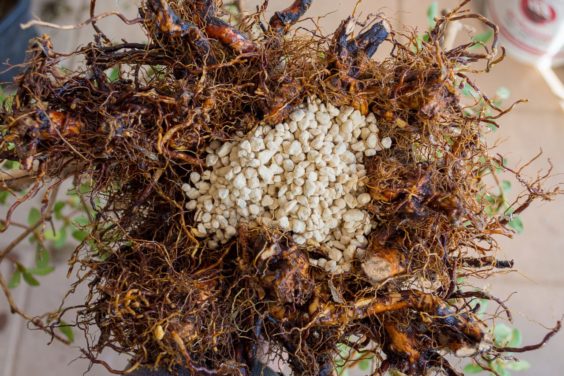
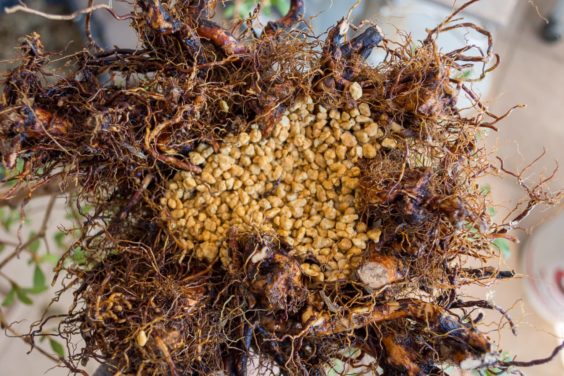
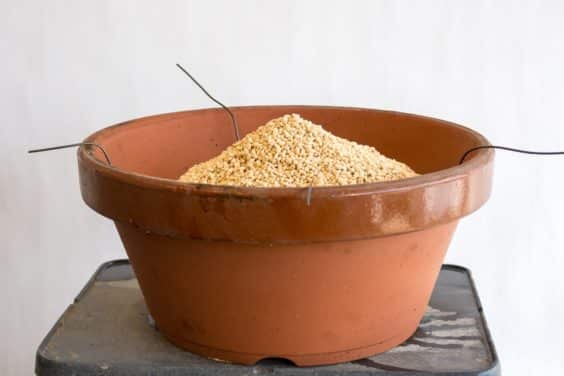
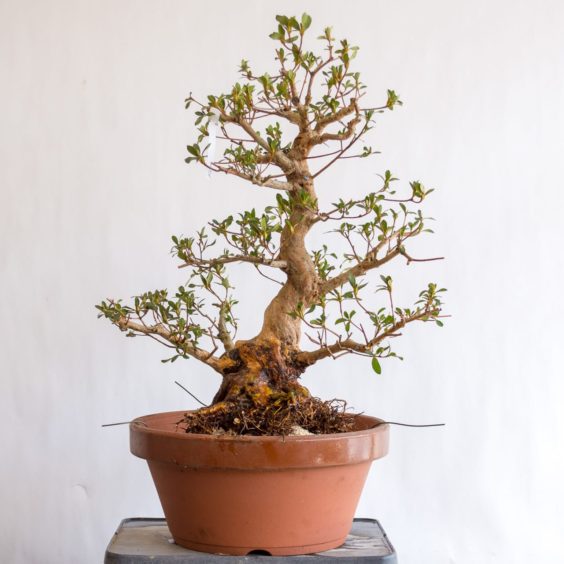
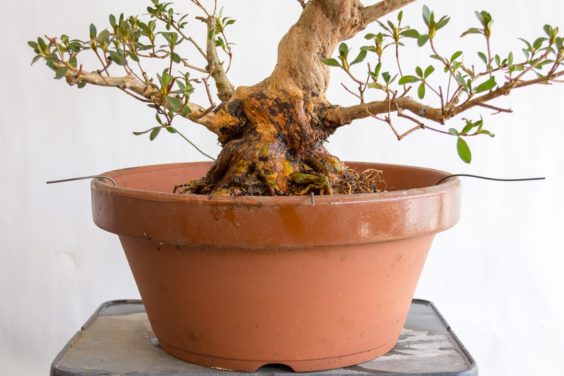
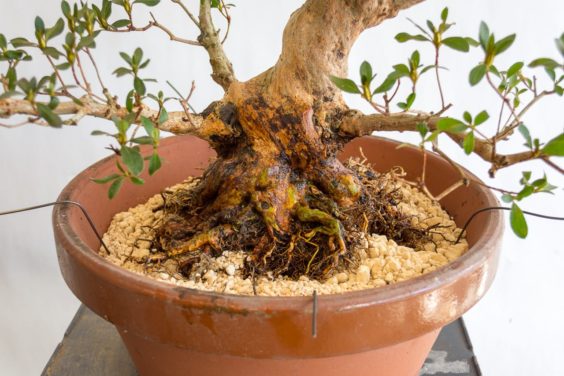
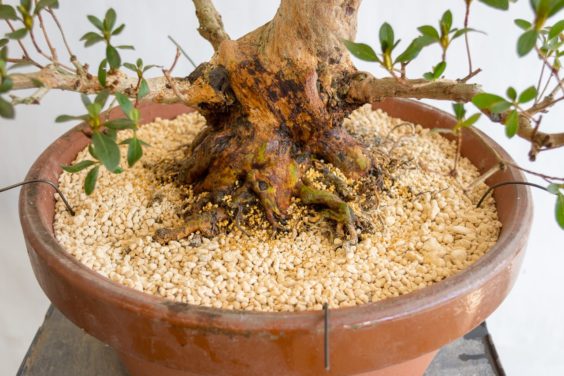

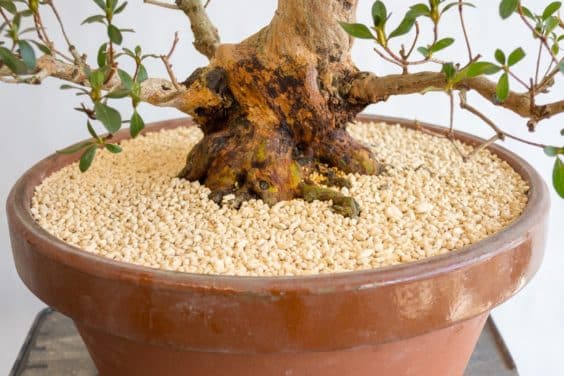
Andrea Chin says
Enjoyed this blog, Jonas. Good technique that you shared on filling the large root hole of the azalea. Thanks!
Ray says
Looking forward to it
Candace says
Great, as always, Jonas. So nice to have this carefully illustrated lesson just before beginning repotting for the spring. Will you be writing about repotting more established satsuki azaleas with their dense mass of roots?
Jonas Dupuich says
Thanks Candace! I’ll likely be writing about whatever I find on the trees I work with. Some of these azaleas have been trained as bonsai for a long time but severe root work was completed as part of the import process.
Ann says
I’m just jealous of the fact that you can use Kanuma (and Akadama) on your trees. Here in New Zealand we have to make our own mixes because we can’t import soil.
Jonas Dupuich says
Thanks for the note Ann – what do you use for azaleas in New Zealand?
Ann says
I’ve just started experimenting with azaleas and currently use a mix of scoria or pumice, compost and peat.
Catherine Stark says
This was interesting. I noticed the various dark-colored bark just above where the air pocket was. Did you find this just by accident or did the tree tell you something was happening?
Jonas Dupuich says
Good question – I purchased the tree bare-root so the pocket was easy to spot.